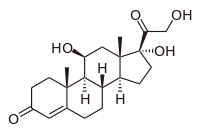
Photo from wikipedia
microRNAs (miRNAs) have recently been recognized as playing an important role in bone‐associated diseases. This study investigated whether the reduced miR‐155‐5p in steroid‐associated osteonecrosis of the femoral head (ONFH) attenuated… Click to show full abstract
microRNAs (miRNAs) have recently been recognized as playing an important role in bone‐associated diseases. This study investigated whether the reduced miR‐155‐5p in steroid‐associated osteonecrosis of the femoral head (ONFH) attenuated osteogenic differentiation and cell proliferation by targeting GSK3B. Bone marrow was collected from the proximal femurs of patients with steroid‐associated ONFH (n = 10) and patients with new femoral neck fracture (n = 10) and mesenchymal stem cells (MSCs) were isolated. The expression profile, the biological function of miR‐155‐5p, and the interaction between miR‐155‐5p and GSK3B were investigated by cell viability measurement, western blot, real‐time polymerase chain reaction, luciferase reporter assay, and Alizarin Red S (ARS) staining of MSCs. The MSCs that were obtained from the femoral neck fracture group and from the steroid‐associated ONFH group were transfected with or without miR‐155‐5p. We found that, in ONFH samples, the level of mature miR‐155‐5p was significantly lower than that of control samples. By inhibiting GSK3B, miR‐155‐5p promoted the nuclear translocation of β‐catenin, increased the expression of osteogenesis‐related genes, and facilitated the proliferation and differentiation of MSCs. Restoring the expression of GSK3B in MSCs partially reversed the effect of miR‐155‐5p. These findings suggest that reduced miR‐155‐5p in steroid‐associated ONFH attenuates osteogenic differentiation and cell proliferation by increased levels of GSK3B and inhibition of Wnt signaling.
Journal Title: Cell Biology International
Year Published: 2020
Link to full text (if available)
Share on Social Media: Sign Up to like & get
recommendations!